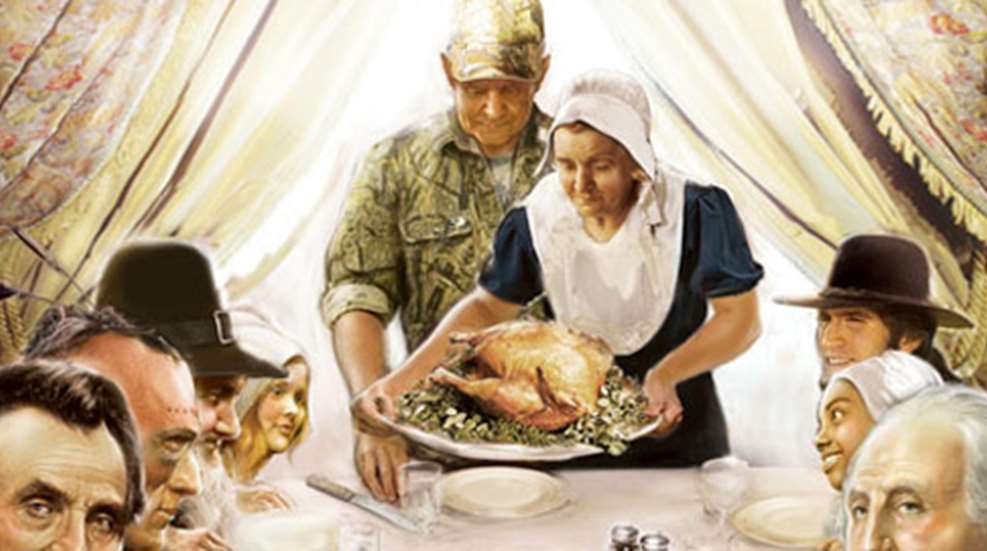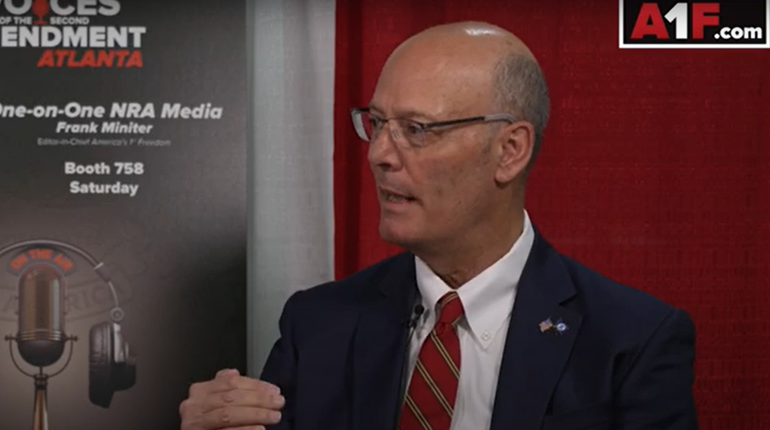
10/2/2010
We’ve all been sold a fantasy about the first Thanksgiving. And that’s okay. Some things should grow purer, cleaner in the telling; age gives them an idealized charm, a warm simplicity as bright as a fairy tale. The present just doesn’t have the same Technicolor hue; it’s too full of dirty details, of things such as Aunt Martha’s dentures falling into the gravy, and Uncle Steve’s dog, Clyde, running about the house with the just-cooked turkey and of other things, sights not so amusing. No, the issue isn’t that the textbook version of Thanksgiving is not true, the problem is it has been whitewashed of a fact that changed the world.
The Pilgrims’ Thanksgiving feast of 1621 in the Plymouth Plantation is now referred to as the original meal that later began the holiday of thanks; however, for British New England, some historians point out that the Popham Colony in Maine conducted a Thanksgiving service in 1607. Other celebrations in the early colonial period even called the day after the fall harvest was complete “Thanksgiving.” Actually, the holiday of thanks wasn’t a surprising occurrence, but a part of their agrarian culture; in fact, many Native Americans held similar celebrations. They deemed the full moon nearest the autumnal equinox to be the “Harvest Moon.” The next full moon, which generally occurs in October, was called the “Hunters Moon.” On clear nights the period of darkness between sunset and moonrise is also shorter near the equinox; as a result, the light reflected from the full moon rising just after sunset was said to help farmers working to bring in their crops, and, in the case of the Hunter’s Moon, to help hunters see deer after twilight.
These two celebrations came together in 1621 at Plymouth Plantation in large part because of Squanto, a Patuxet Native American. Much like Pocahontas, Squanto taught the pilgrims how to catch eel and grow corn and served as an interpreter. (Squanto had learned English while enslaved in Europe.) Squanto negotiated with the Wampanoag chief, Massasoit, and got him to give food to the starving Pilgrims during their first winter. Because of Squanto’s help, the feast now referred to as the first Thanksgiving was held in early October in 1621 and was celebrated by 53 Pilgrims, along with the Native American chief Massasoit and 90 members of his tribe.
Squanto, however, soon fell out of favor with Massasoit. At one point, the pilgrims even assembled an armed force to free Squanto from a hostile tribe. They freed Squanto, but he didn’t live long afterwards. Many historians believe that Squanto was poisoned, likely by the Wampanoag. He was buried in Plymouth Plantation’s cemetery.
Three accounts of the Plymouth Plantation’s Thanksgiving feast survive: Of Plymouth Plantation by William Bradford; Mourt’s Relation, which was probably written by Edward Winslow; and New England’s Memorial penned by Captain Nathaniel Morton. The celebration lasted three days and featured a feast that included ducks, geese, wild turkeys, fish caught by the colonists and five deer killed by the Wampanoag.
Bradford noted that “besides waterfowl there was great store of wild turkeys, of which [we] took many.” (Today, thanks to conservation efforts by American hunters, wild turkeys, which had been reduced to about 30,000 nationwide in the 1920s, now number about 7 million and can be hunted in every state except Alaska.)
Winslow described the Plymouth Plantation’s Thanksgiving feast this way: “Our harvest being gotten in, our governor sent four men on fowling, that so we might after a special manner rejoice together after we had gathered the fruits of our labor. They four in one day killed as much fowl as, with a little help beside, served the company almost a week. At which time, amongst other recreations, we exercised our arms, many of the Indians coming amongst us, and among the rest their greatest king Massasoit, with some ninety men, whom for three days we entertained and feasted, and they went out and killed five deer, which we brought to the plantation and bestowed on our governor.”
Afterwards, festivals of Thanksgiving were observed sporadically in the colonies. But in 1789, Elias Boudinot, a member of the U.S. House of Representatives from Massachusetts, moved that a day of Thanksgiving be held to thank God for giving the American people the prudence to create a constitution that safeguarded freedom. A congressional committee approved the motion and informed President George Washington. On Oct. 3, 1789, Washington proclaimed “a day of public thanksgiving and prayer” on Thursday, the 26th of November. But Thanksgiving faded away for decades after President James Madison proclaimed a day of Thanksgiving in 1815.
Most of the credit for the permanent establishment of a Thanksgiving holiday goes to Sarah Josepha Hale. She was the editor of Ladies Magazine. She argued for the return of Thanksgiving in articles and by lobbying politicians. After years of crusading, she swayed President Abraham Lincoln. On Oct. 3, 1863, Lincoln proclaimed a national Thanksgiving Day be observed every year on the fourth Thursday of November.
Other than such historical details, what has been lost in time is that the Pilgrims were in peril in part because they’d tried communal farming. During their first 2½ years the Pilgrims at Plymouth Plantation didn’t own private property. Food was grown by the townspeople and distributed equally. Communism ruled. Naturally, some residents began sleeping in, sure someone else would till the field.
So, according to Bradford, “The experience that was had in this common course and condition, tried sundry years and that amongst godly and sober men, may well evince the vanity of that conceit of Plato’s and other ancients applauded by some of later times; that the taking away of property and bringing in community into a commonwealth would make them happy and flourishing; as if they were wiser than God. For this community (so far as it was) was found to breed much confusion and discontent and retard much employment that would have been to their benefit.”
By 1623, after cinching down their square belt buckles, Plymouth Plantation’s leaders tried the American path to prosperity. They allotted private property to each family and declared that if residents didn’t work, they wouldn’t eat. Productivity immediately increased.
Again, according to William Bradford in his account, “So they began to think how they might raise as much corn as they could, and obtain a better crop than they had done, that they might not still thus languish in misery. At length, after much debate of things, the Governor … gave way that they should set corn every man for his own particular, and in that regard trust to themselves … .
And so assigned to every family a parcel of land, according to the proportion of the number, for that end … . This had very good success, for it made all hands industrious, so as much more corn was planted than otherwise would have been by any means the Governor or any other could use, and saved him a great deal of trouble, and gave far better content. The women now went willingly into the field, and took their little ones with them to set corn; which before would allege weakness and inability; whom to have compelled would have been thought great tyranny and oppression.”
Such is the gritty true story of how an American holiday of thanks led to times of plenty, and even to the capitalistically augmented Bread Basket of the world.





































